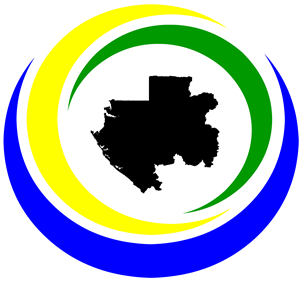Sustainable development in Gabon: For a better management of Gabon's land and natural resources.
KEY FIGURES
A National Land Allocation Plan
to regulate land use in Gabon:
KEY FIGURES
The National Land Allocation Commission (CNAT)
In accordance with the political vision of the Head of State, as set forth in the Emerging Gabon Strategic Plan, Gabon intends to regulate the use of its land through a National Land Allocation Plan.
An interministerial commission was thus established by the Gabonese government and placed under the supervision of the Minister in charge of sustainable development: National Land Allocation Commission (CNAT).
Created by Decree No. 00212/PR/MEPPDD of July 21, 2017 to develop the National Land Allocation Plan, it frames and defines land use, guarantees the compatibility of socio-economic activities, environmental integrity and optimization of the management of the country’s natural resources.
PROGRAMS
The CAFI-Gabon Program is a true gas pedal of reforms in Central Africa to mitigate climate change, preserve forests, reduce poverty and contribute to sustainable development in 3 phases. The first phase, implemented over a five-year period between 2018 and 2022, provides funding of $18.4 million managed by the French Development Agency (AFD) as an implementing partner.
National Land
Allocation
Plan (PNAT)
National Observation System of Natural Resources and Forests (SNORNF)
News
GABON'S PLEDGE
for a sustainable development
Located in the heart of the Congo Basin known as the planet's second lung, Gabon is one of Africa's largest forest countries: estimated at 23.6 million hectares (2015), its forest cover represents 88 % of the national territory, while the land use and forest change sector alone accounts for 93% of the country's greenhouse gas emissions
Gabon was thefirst African country o submit its Nationally Determined Contribution (NDC) for the COP21 in Paris in 2015. These commitments were reaffirmed at the Marrakech Conference (COP 22) in 2016. A commitment to preserving the environment that actually manifested very early, with the creation of a forestry fund as early as 1960 and a Ministry of Environmental Protection in 1972.
With the increasing shortage of oil resources, the use and economic development of renewable resources from forests is a major challenge for Gabon, which is committed to :
- Reduce the exploitation of its forests to 11 million ha in 2025, compared to 16 in 2018. 2018.
- Reduce greenhouse gas emissions from the sector of land use, change in land use and forests in Gabon by 50 % (2005-2025)
- Support the development of projects in key sectors for strengthening the region’s economy, providing a viable alternative to deforestation: improving waterways, building small hydroelectric dams, strengthening soil irrigation systems, developing fishing, fish farming, aquaculture, and developing ecotourism.
- Encouraging operators to implement management plans or production forests and pushing foresters to extend their rotations from 15 years to 25 years, with lower damage rates, instead of 10 years (2001 Forestry Code).
To do this, Gabon has initiated :
- The creation in the early 2000s of 13 national parks which have allowed for the sanctuary of 3 million hectares of forest, representing 11 % of the national territory.
- A National Climate Plan, the climate component of the national strategic plan “Gabon Émergent”, developed after the Copenhagen Conference in 2010 and implemented in November 2013. This Plan, formulated by Gabon’s National Climate Council, sets out short- and medium-term development strategies for sectors of activity with a strong impact on climate change, sectoral strategies for controlling greenhouse gas emissions, as well as strategies to adapt the territory to the effects of climate change (eg: rising sea levels).
- The creation, in 2014, of a Sustainable Development Fund to finance the realization of programs and projects in line with the principles of sustainable development.
- The creation, in 2014, of a Central Environmental Directorate in each ministry.
By allowing Gabon to focus its agricultural development on areas with the lowest carbon and conservation value, the country’s land allocation policy comes to ensure compatibility between territories, resources and socioeconomic activities :
- One of the main objectives of the national strategic plan “Gabon Émergent” is to lead the country tofood self-sufficiency : by 2020, thanks to the “Graine” program (Gabonaise des réalisations agricoles et des initiatives des nationaux engagés), nearly 850 cooperatives have been formed, 400 independent farmers registered, 1,148 jobs created and 2,600 farmers trained.
- Optimizing land management directly supports the development of certain strategic sectors for the country, including agriculture, forestry, mining and oil.
Ressources
-
Decree of the National Climate Council
JUNE 1 to 15, 2010-N°6
-
Decree Creation of the CNAT
24 au 30 AOUT 2017 - N°362
-
Decree Creation of the ANPC
FORTY SIXTH YEAR – N° 3
-
AGEOS decree
FIFTY SIXTH YEAR – N° 252
















Gabon’s land allocation policy, via the PNAT and SNORNF programs, aims to recognize and defend people’s rights to land through :